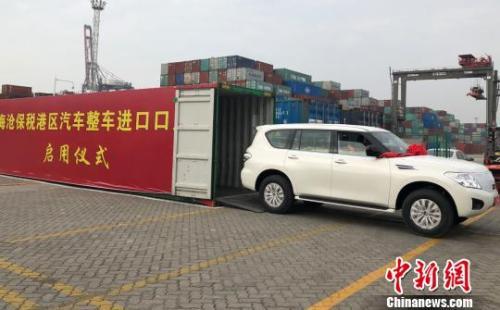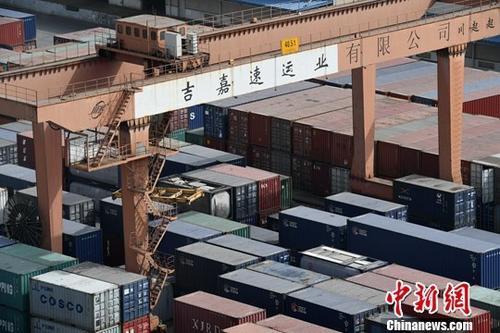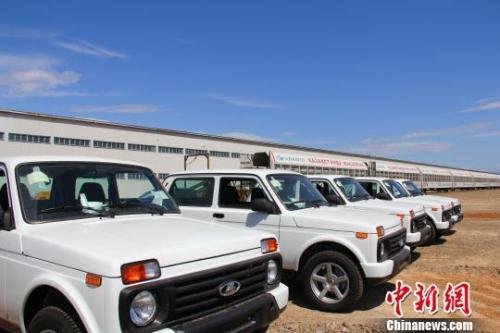Liu He, deputy director of the National Development and Reform Commission of China, said that in terms of expanding imports, China had reduced the tariff rate on import tariffs on 187 products from 17.3% to 7.7% last year. In the future, we will also step up efforts in this area and will reduce the auto import tariffs in an orderly manner. What does it mean for auto import tariffs to change face? At the recently held Davos Forum, Liu He, deputy director of the China National Development and Reform Commission and director of the Office of the Central Leading Group of Finance and Economics, said that in terms of expanding imports, China had lowered the tariff rate on import tariffs on 187 products from 17.3% last year to 7.7. %. In the future, we will also step up efforts in this area and will reduce the auto import tariffs in an orderly manner. With the gradual opening of China's auto import market, auto import tariffs will continue to “change faceâ€. So, China's auto import tariffs have had several "changing faces." What does it mean after this "face change"? Who will benefit from this, and whose interests will suffer? The picture shows the imported cars exiting the container cabinet. Chen Yueshe Have you changed your face several times? Since 1986, the tariffs and import adjustment tax were collected together, and the vehicle displacement was used as the tariff collection standard. By July 1, 2016, the tariff rate for imported vehicle tariffs was locked at 25%. China has experienced nine auto import tariff adjustments in total. In 1986, China used vehicle displacement as a tariff collection standard. The import tariff rate for fuel cars with a displacement of 3.0L or more was 220%, and the tax rate for vehicles with a displacement of 3.0L or less was 180%. The price of imported cars is three times higher than that of the international market, and the price of imported parts is also several times higher than the international price. This tax rate standard lasted until 1994 and lasted for eight years. April 1, 1994, China's imported car market ushered in a turning point. 105 of the 175 car tax catalogs were downgraded. The fuel tax rate for fuel oils with a displacement of 3.0L or more dropped to 150%, and the tax rate for vehicles with a 3.0L or less price dropped to 110%, a 70% reduction. This is also the first time that China's import auto market has lowered its tariffs. On October 1, 1997, China's auto import tariffs were lowered again. The tariff rate of imported automobiles with a displacement of 3.0L or more dropped to 100%, and dropped below 3.0L to 80%. Data Map: Chengdu International Railway Port rows contain containers that are about to export goods. China News Agency reporter Zhang Langshe With China's accession to the WTO and independent brand car companies continuously accelerating the deployment of overseas markets, from 2001 to 2004, China's auto import tariffs have been reduced four times, and the tariff rate of imported vehicle models with 3.0L or more displacement has decreased from 100%. 37.6%, below 3.0L, from 80% to 34.2%. On January 1, 2005, China cancelled the license system for imported automobile quotas in accordance with its commitments, implemented automatic import license management for automotive products, unifiedly reduced the tariffs on imported automobiles to 30%, and adopted the policy of tariff + emission consumption tax. On January 1, 2006, according to the Tariff Reduction Commitment of China's accession to the World Trade Organization, China further lowered its import tariffs on more than 100 tax purposes, and its auto import tariff was further reduced to 28%. Six months later, on July 1st, after the ninth adjustment, the tariff rate for imported vehicle tariffs in China was finally locked at 25%, and the tariff on imported auto parts was also reduced to 10%. Eleven years later, from November 8 to November 10, 2017, major consensus was reached in the first meeting between China and U.S. dollars, that is, China will gradually reduce car tariffs appropriately in accordance with its own timetable and road map for expanding opening up. According to sources, the preliminary estimate is about 15%. After a lapse of three months, Liu He once again proposed to lower auto import tariffs, indicating that China's auto import tariff reduction work is advancing rapidly. It is getting closer and closer to the tenth “face changeâ€. But who will benefit after "changing face," and whose interests will suffer? The picture shows that the Alashankou Comprehensive Free Trade Zone in Xinjiang welcomes the largest imported vehicle. Wang Qianshe How many families are happy? The reduction of automobile import tariffs, first of all, is a great boon for consumers who want to buy imported cars. Someone has calculated that if the auto import tariff is reduced from the current 25% to 15%, the imported cars that are priced at 700,000 to 800,000 yuan will be priced down from 40,000 to 50,000 yuan. Second, multinational car manufacturers and domestic import car dealers will also benefit from this. The reduction of automobile import tariffs will increase the competitiveness of imported cars, and the total volume of imported cars in China will also increase. Since China’s accession to the WTO, the number of imported cars has increased from 70,000 in 2001 to more than 1,078,000 in 2016. In November 2017, a total of 122,500 vehicles were imported, representing a year-on-year increase of 18.12% and a year-on-year increase of 13.98%. The import value was US$5.013 billion, a year-on-year increase of 18.21% and a year-on-year increase of 15.04%. Sun Yong, president and chief executive officer of China Novozymes (Beijing) Education Investment Co., Ltd., said that the Chinese auto market is sorted by price from high to low, followed by imported cars, joint-venture cars, and self-owned brands. The price of imported cars is downward. The joint-venture vehicles and self-owned brand cars must also be tested. Fortunately, imported cars account for only a small percentage of the total, only about 4%, and the quality of joint-venture vehicles and self-owned brands continues to increase. The ability is strong, so the overall impact will not be too great. However, the reduction of automobile tariffs still needs to be well-managed and cannot be too low. "If the tariffs are too low, some multinational car companies may shift their focus to exports and abandon joint production in China. Like South Korea, they are very close to China and their own automobile industry is more developed. If China's car tariff is too low, They are very likely to focus on exports.†Wu Songquan, chief expert of the China Automotive Technology and Research Center, believes that there is room for further reduction of China’s auto tariffs, but it should not be too low. According to Bai Ming, deputy director of the Institute of International Markets of the Ministry of Commerce, reducing tariffs is an inevitable move for China to fulfill its WTO accession commitments, including the consensus reached after the meeting between the heads of state of China and the United States. However, China will surely reduce tariffs in accordance with its own timetable and roadmap and in accordance with China’s national conditions. There must be a process in between. In this regard, Chinese domestic companies need not worry too much. "The Chinese auto industry is now in a critical period toward becoming a powerful automobile country. If the goal of building a powerful automobile country within ten years can be achieved as scheduled, then we will inevitably implement automobile tariffs that are commensurate with the level of automobile power," said Bai Ming. Aluminum Block,Cnc Milling Machining Parts,Aluminum Cnc Machining Parts,4 Axis Machining Parts Huaying Chuang Precision Machinery Co., Ltd. , https://www.hycmetal.com

